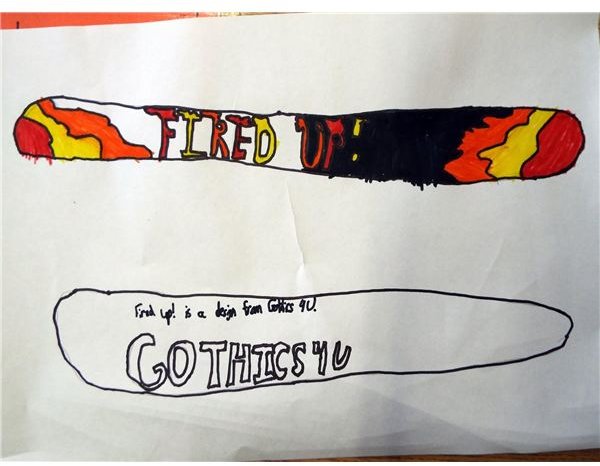Snowboard Design Art Lesson: Adaptable for 3rd to 12th Grade
The 2014 Sochi Olympics serve as a great inspiration for artists and athletes alike as the sports equipment tends to be works of art in themselves. Students of a large age range can be successful in this lesson which focuses on integrating thoughtful design into a piece of artwork.
Educators and students can make decisions regarding materials as the lesson can easily be manipulated to work with a variety of art tools. Art educators can take this opportunity to integrate current events, elements, and principles of art into one lesson.
Lesson Objectives:
CCSS.ELA-Literacy.CCRA.SL.1 Prepare for and participate effectively in a range of conversations and collaborations with diverse partners, building on others’ ideas and expressing their own clearly and persuasively.
CCSS.ELA-Literacy.CCRA.SL.2 Integrate and evaluate information presented in diverse media and formats, including visually, quantitatively, and orally.
CCSS.ELA-Literacy.CCRA.SL.6 Adapt speech to a variety of contexts and communicative tasks, demonstrating command of formal English when indicated or appropriate.
Materials Required:
- Paper
- Various coloring tools
- Black Paper
Lesson Procedure:
1. Students will discuss the Olympic events that happened in Sochi, Russia. They will point out the designs within the outfits and sporting equipment the Olympians wore.
2. Students are led into a discussion about what stands out to them in the designs, and what makes a strong logo. Students are encouraged to think about the career path that would lead into snowboard design, and how they could make that their profession.
This hits on many state standards which encourage discussions about careers, and art centered professions. Display images of snowboards that are on the consumer market. These images provide a great source for the educator to note the key points and key terms of the lesson.
**
Questions that could be asked include:
- What makes this snowboard successful in its design?
- Why does this one stand out to you?
- Do you feel as if the colors work well together?
- Did the artist balance the negative space within the design?
- Are you planning on limiting your color palette?
3. Students are to create a ‘sloppy copy’ of their snowboard on scrap paper to sketch out ideas of what they’d like to see on their own personal snowboard. They can create both the top and bottom of the snowboard, or choose just to focus on one.
4. Students are to move onto a large sheet of paper and design their board using pencil, then go into it with colored pencil, markers, or crayons. Students are to focus on craftsmanship within their piece to create neat coloring.
5. Students are to cut their board out, and glue it on to a black piece of paper to make it appear more formal.
Assessment:
Keep the assessment very informal by asking the students during the process of creating the art piece.
- How can I create a snowboard design that others would want to have for themselves.
- What sort of images would work well on a snowboard?
- How can I make both the front and the back of the snowboard cohesive in design?
This lesson will yield many different results from our students, which is great to encourage student creativity. No two snowboards should look exactly alike as the inspiration comes from a personal standpoint. Due to the very loose requirements of the piece it is important to provide feedback to the students as they work. The ‘sloppy copy’ sketches enable our students to pull away from simple design and to think about the final piece as a finished product.
References
- The Sochi Olympics Official Website: http://www.sochi2014.com/en
- Common Core Website: http://www.corestandards.org/ELA-Literacy/CCRA/SL
- Google Images of Snowboard Design: https://www.google.com/#q=snowboard+design
